As many cities around South East Asia seem content to continue to move forward, Laos is seemingly paused in time. No, not out of fear for the future, but because of their love for traditions. Traditions that carry on today like they have for centuries.
It’s not just their spiritual heritage, either. In the morning, markets are set up before the sun hits the horizon. The fish are still flopping about when they hit the stalls and the early bird, well, they definitely win. The markets disperse and the day runs as it always does until the red and blue awnings are set up again at sunset.
It’s a peaceful way of living and it sure feels like the people of Luang Prabang have this whole life thing figured out. Take your time to explore the beautiful city, home to over 30 temples, one that doesn’t overpower the beauty of the mountains and the strength of the Mekong River. Do it just like the locals, and you’ll see why nothing needs to change.

Walk Through the Old Town
A great first day activity is to strap on your walking shoes and make your way to Luang Prabang’s Old Town. In one of the most picturesque parts of the city and featuring some impressive architecture, the Old Town is a sight for sore eyes.
With the mountains in the distance and surrounded by the Nam Khan and Mekong rivers, the district is but a small pocket of Luang Prabang. However, it provides a great insight into the city’s past. The area has a quiet ambiance and delightful charm that differs it from the rest of the city. It’s here you can get away from the bustle and enjoy the sounds of life around you.
The surrounding buildings are a convergence of Eastern and Western cultures, where Chinese, Thai and Vietnamese styles meet French colonial designs. This also plays out in the local art scene with some incredible handcrafts for sale that connect to several distinct cultures.
Early morning and evening are the two best times to visit. The start of the day is peaceful and great for sightseeing. At night, the colorful buildings light up and night markets come to life.
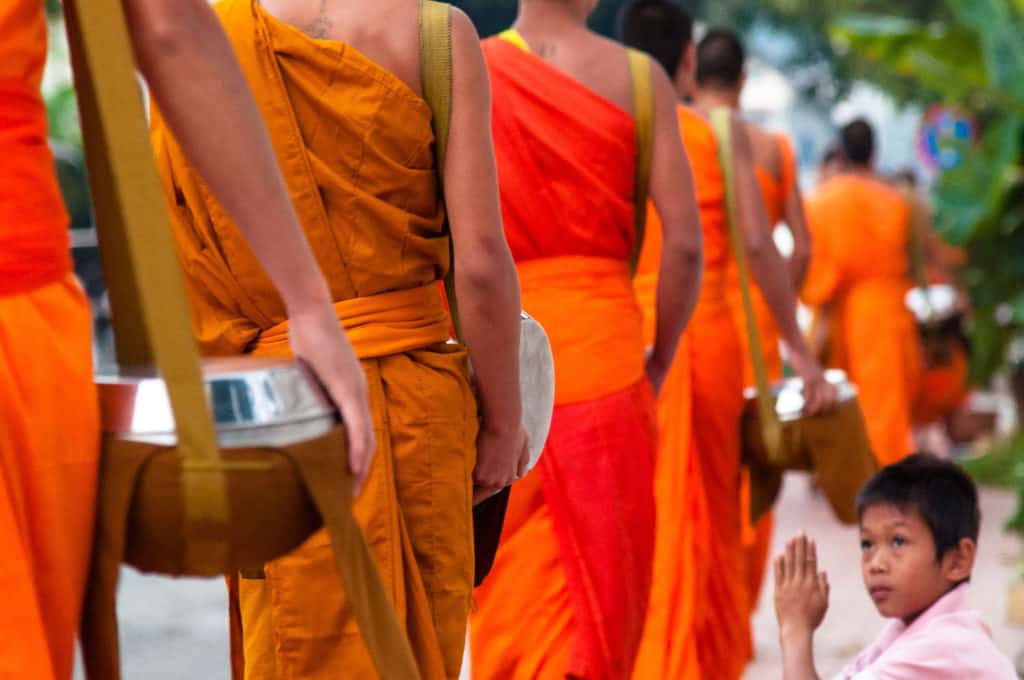
Watch Tak Bat
One of the best aspects of traveling through Laos is how in tune the country is to its heritage and traditions. Elsewhere, these practices could easily fall by the wayside or be celebrated by just a fringe group. But spirituality continues to play the same role in Laos culture as it has in the centuries past.
A prime example of this is Tak Bat, also known as the Alms Giving Ceremony. This is a tradition that has been occurring since the 1300s. It involves monks leaving their temples in the early hours of the morning to collect charity to help the vulnerable.
Many prominent traditions often keep travelers at a distance. But what makes Tak Bat so incredible is how accepting they are of visitors, who are encouraged to take part. If you choose to do so, arrive early with your clothes covering your shoulders, chest and legs. The ceremony begins on Main Street before moving around Luang Prabang. Common offerings include rice, fruit and even local candy.
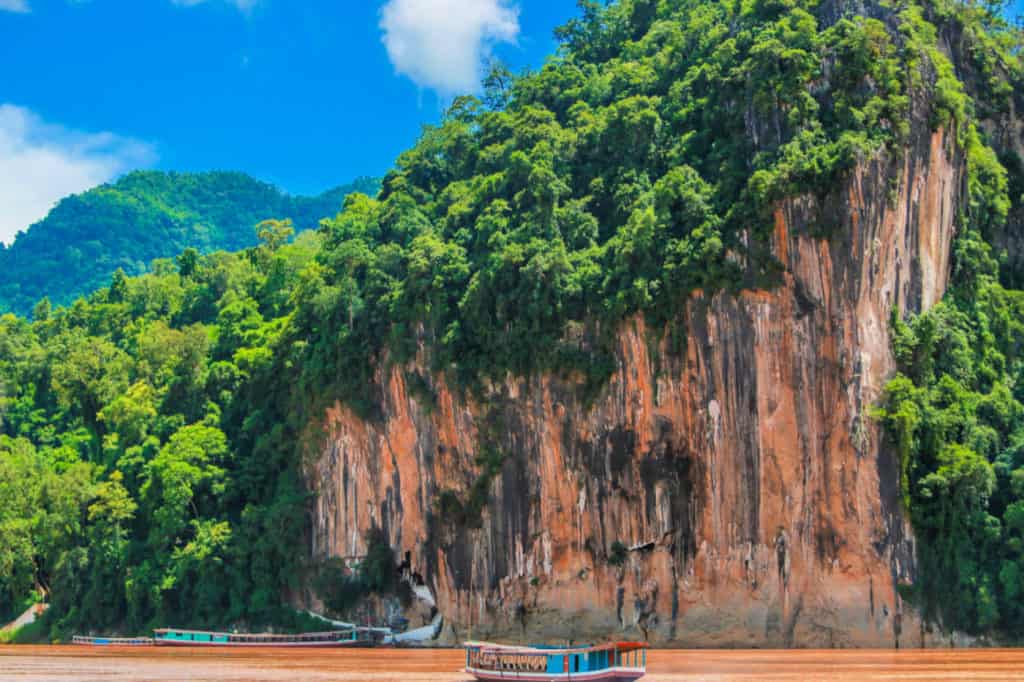
Explore the Pak Ou Caves
A trip to Pak Ou Caves grants the opportunity to explore one of the top natural landmarks in Luang Prabang, and also the vast Mekong River. Departing from the waterfront, cruise along the river, enjoying a beautiful perspective of the city and countryside for around an hour before arriving at the caves. But Pak Ou isn’t your standard cave. It’s also a historic religious site with ancient Buddha statues adorned to the rock walls.
The Pak Ou Caves are unsurprisingly popular, so it may be worth opting for a tour outside of the busy midday hours. The first cave you arrive at has an abundance of statues hanging among the craggy walls. They come in all different shapes and sizes, having been brought here from around the country for hundreds of years.
It began way back when Luang Prabang was first settled and took one simple gesture to begin a long-held tradition. From the large cave, you’ll walk for 10 minutes to a smaller and darker cave. This cave tends to be quieter, but make sure to bring sturdy footwear for the experience.
On this guided boat tour, you’ll see not only the caves, but enjoy a stop at the Whiskey Village before heading to Kuang Si Falls.
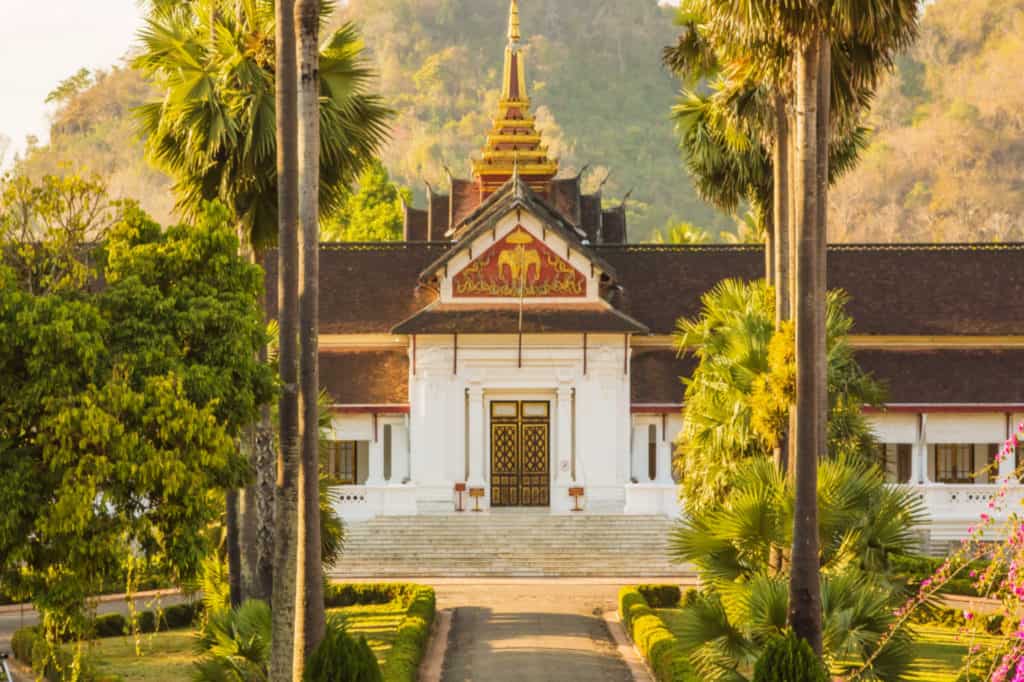
Visit the Royal Palace Museum
The monarchy in Laos started in the middle of the 14th century when it was then known as the Kingdom of Lan Xang. It went through many iterations over the following six centuries before a revolution occurred in 1975. This left the royal family in exile and led to the country becoming a democratic republic.
The Royal Palace that stands in Luang Prabang was built in 1904. The beautiful building features traditional Laos architecture with notable French influence, creating an intricate look. Today, it’s one of the best ways to explore Laos’ royal heritage as it was occupied right up to the day of the revolution.
Two decades after that fateful event, the palace reopened as a museum. Visitors can explore a thorough collection of relics from the bygone era, which will take you on a journey into the events that shaped the nation. One of the best artifacts is the Buddha statue, which inspired the city’s name.
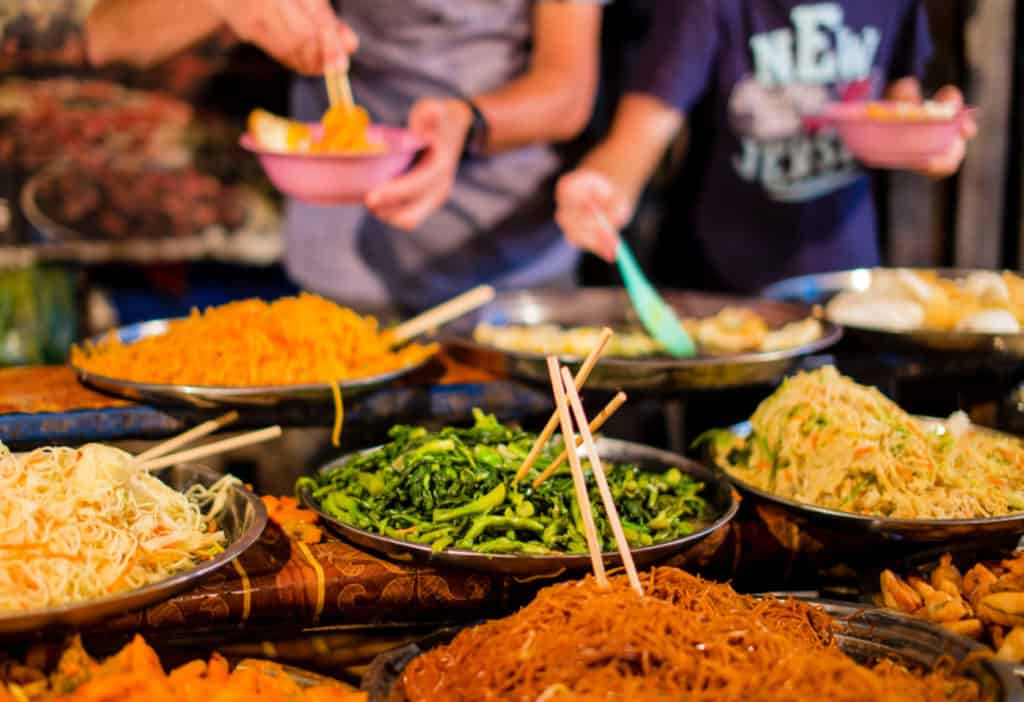
Tour the Night Markets
If you happened to tour the Royal Palace in the late afternoon, you may run into Luang Prabang’s top night market. Beginning at 5pm, the surrounding streets are closed to create room for the boisterous event. Traffic is quickly replaced by hundreds of pedestrians wandering between blue and red awnings that sheltered a wide variety of goods.
Whether you’re a big shopper or not, there’s something exhilarating about a night market. Especially here, with the bright lights and balmy weather. There are around 300 stalls to peruse, selling anything from fresh street food to cheap clothing, decor, handicrafts and memorable trinkets.
Start by grabbing a snack to nibble on as you wander. You can’t go wrong with a mini coconut pancake. With your treat in hand, jump between each stall, admiring both the products and the captivating atmosphere that mixes locals and travelers in great numbers. Keep your haggling skills handy before refueling with some more authentic local eats.
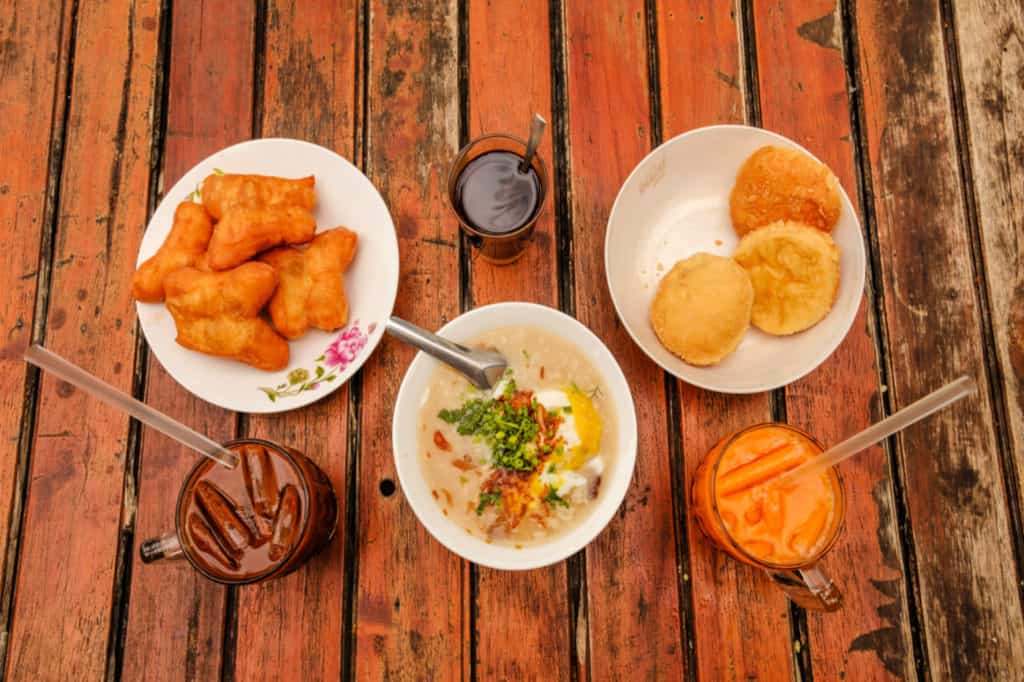
Go on a Food Tour
In order to make the most of your time in Luang Prabang, it helps to know a thing or two about Laos cuisine. Laotian food is teeming with herbs and spices, creating vibrant and prismatic dishes. For locals, food is an extension of their language, it’s how they express themselves.
Travelers will find some similarities in the local cuisine with that of Thailand and Vietnam. Especially with the use of fresh herbs, noodles, and rice. Sticky rice is the most common staple. In fact, it’s common for Laotians to refer to themselves as the descendant of sticky rice. Traditionally, the rice is steamed in bamboo baskets, later complemented by a spicy soup and a simple meat dish.
Local eats that you must try as you travel around Luang Prabang include laap, (a meat or fish salad, often using raw ingredients), mok pa (steamed fish), and khao jii pate (baguette pate).
To experience the best food and top restaurants around Luang Prabang, sign up for this food tour. Explore the town on a scooter and even get a free t-shirt.
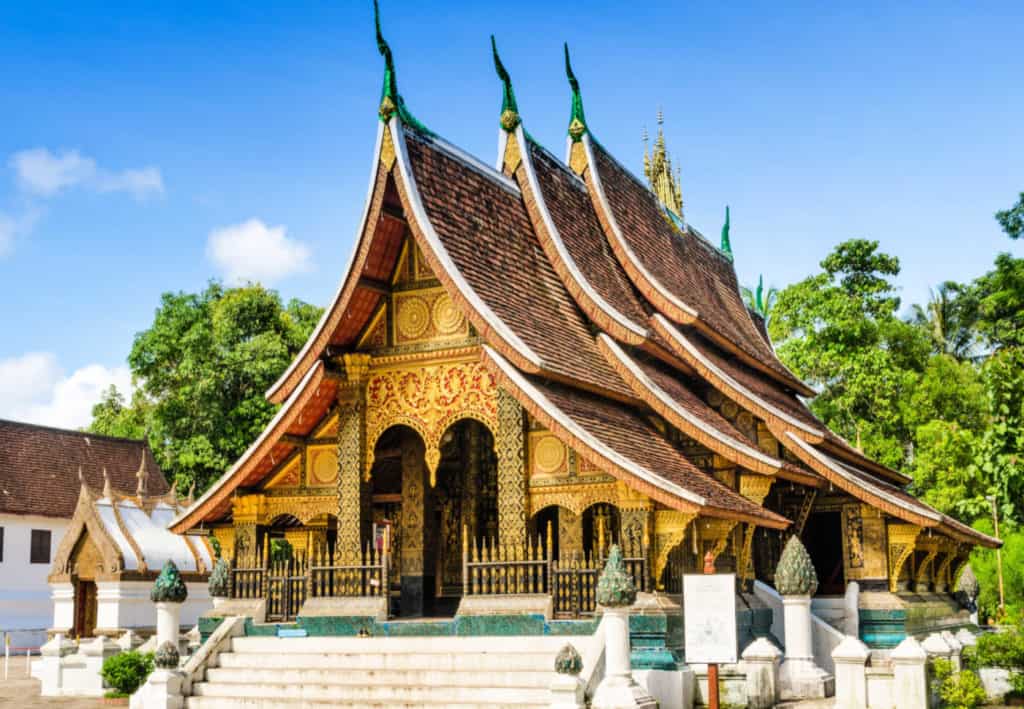
Walk Inside Wat Xiengthong
One of the most renowned temples in Luang Prabang, Wat Xiengthong has a prominent place in local life. The temple was built in the 16th century and it was here that every king was crowned until the revolution.
While this showcases its place in history, for many travelers it’s the stunning mosaics that make the temple a must visit. The entrance features engraved wooden doors that explore many events from the life of Buddha. Beside it is a unique reclining Buddha statue that dates back to the early construction of Wat Xiengthong.
After passing through the doors, you’ll be privy to the ornate mosaics that make up the temple walls. The bright pink wall is laden with art, including people, animals and buildings, all combining to tell an intimate story. Under the Laos sun, the mosaics sparkle having lost none of its shine over the centuries. The temple has been spectacularly preserved, allowing you to see the structure as it was in the 1500s.
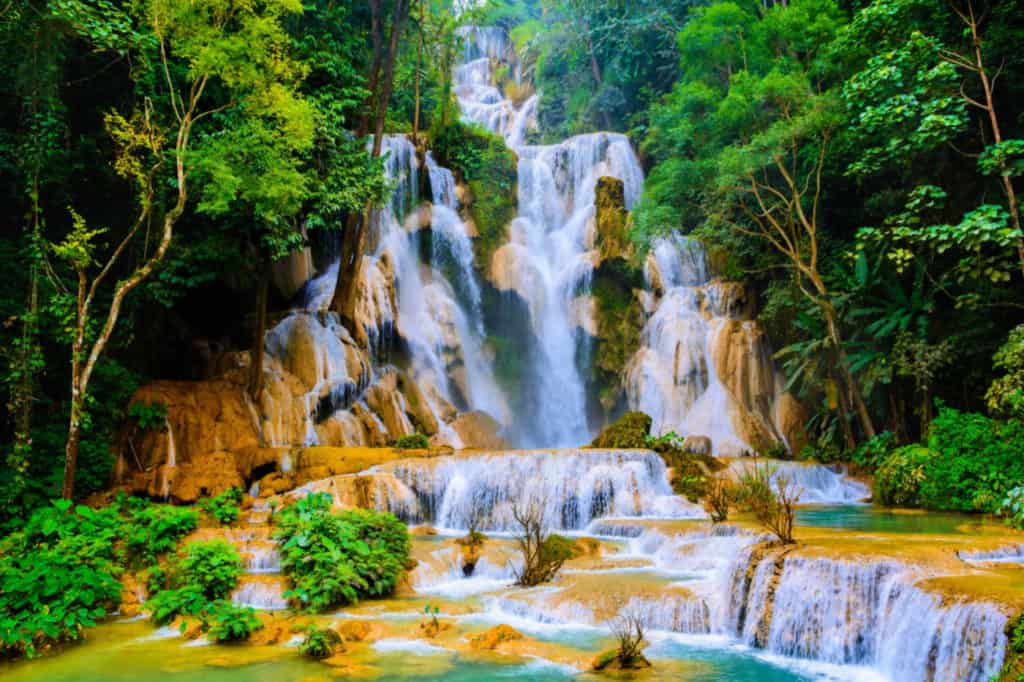
Go Chase Waterfalls
Around 40 minutes southwest of Luang Prabang is the gorgeous Kuang Si Waterfalls. A trip to the falls is inexpensive, taking you through the beautiful countryside, passing through several charming villages as you go. You may even be able to arrange transport through your accommodation.
The falls are within Kuang Si Park, which opens daily from 8am. After a brief walk, you’ll hear the sounds of the cascading waterfalls and the mist rising through the air. The dense green forests disperse, opening up a world of white and turquoise.
The veil of water splits in multiple directions as it tumbles down 165 feet (50m). It’s a dramatic sight that ends in a pool of bright blue water. Visitors are allowed to jump in for a swim and stand under the mini waterfalls that flow across the rocky edge.
There are changing rooms near the falls, but we recommend keeping your t-shirt and shorts on out of respect. Although the falls become even more spectacular in the wet season, this can lead to a lot of additional sediment dimming its glistening colors. So visit outside of that time frame for the best views.
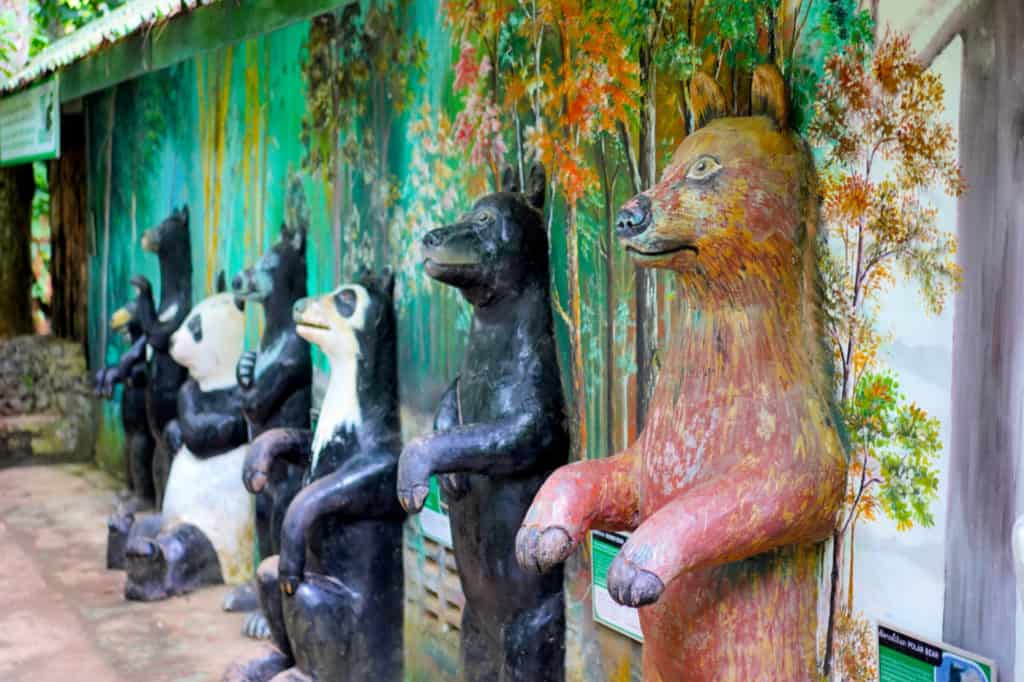
Visit the Moon Bear Sanctuary
If you’ve come this far to see the falls, go slightly further and visit the nearby moon bear sanctuary. The Tat Kuang Si Rescue Centre is the home to over 70 moon bears who have been rescued from illegal poachers and traffickers. Instead, these delightful but endangered animals get to lead a protected life in maintained forests.
Construction of the sanctuary began in 2003 and since then the park has worked alongside the local government to not just save the animals but continue to grow the sanctuary. The playful moon bears are a delight to watch as they make use of the playgrounds, tire swings and hammocks. Visitors can even hide treats for the bears and wait for them to be discovered.
Another way to see the moon bears and support the movement is at the Luang Prabang Wildlife Sanctuary. This is closer to the city, and features multiple species. You’ll also see sun bears, red pandas and macaques before preparing an enrichment feed for the animals.
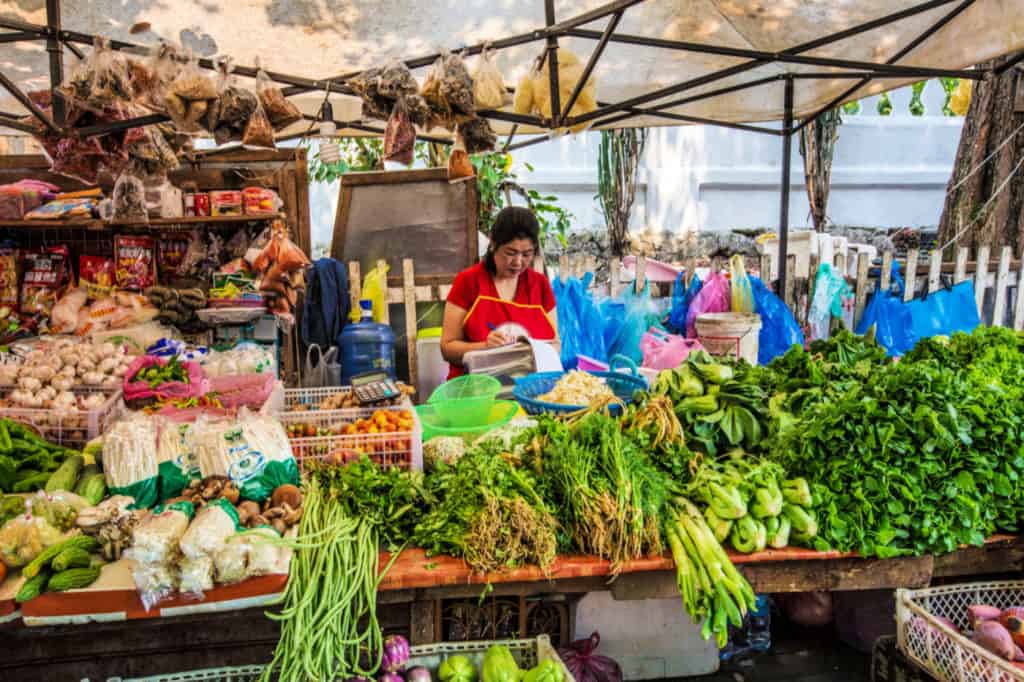
Wake Up Early for the Morning Market
Sometimes lost in the popularity of Luang Prabang’s night markets is their morning market, a great way to kick start your day. With a stronger focus on fresh produce from local farms and fishermen, the morning market provides an even better look at local life than the boisterous night market.
When planning on a day to visit the morning market, choose a day you’re willing to wake up early. The best time to visit is around 7am when families converge on the street to do their grocery shopping. Arriving early gives you the chance to shop alongside them while the good stuff from freshly picked fruit to just caught fish is still on the table.
Take your time to indulge in the culinary scene, picking up a popular breakfast snack of grilled sticky rice which is placed on a skewer. Alongside the produce, you’ll also find traditional rice wine to spice up the picnic basket along with rice cakes that are a handy snack as you explore the rest of the city.
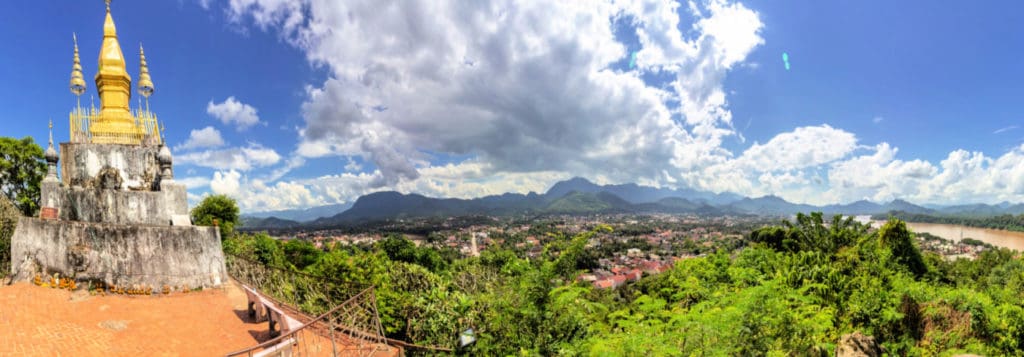
Go for a Hike
When wandering around Luang Prabang, particularly the Royal Palace and local markets, Mount Phou Si will always be in view. The diminutive mountain is more of a hill, but still provides the sort of views that all hikers desire. The best part? You won’t have to walk far.
The trail begins in front of Wat Siphoutthabath and snakes around the temple and into the trees. As the path begins to rise, you’ll begin your journey of over 300 steps to make it to the summit. But after a short while the peak will come into view shortly followed by spectacular views of Luang Prabang, the Mekong and surround valley. At the top, you’ll be joined by Wat Chom Si, alongside a cave with a statue of Buddha.
It’s the best view in town, and best captured during golden hour. As the sun sets, the day’s final light splashes across the river and dances across the temple rooftops, joined by the growing presence of city lights. But be sure to arrive early to get yourself a prized spot.
Discover Laos’ Hilltribe Culture
With 49 distinct ethnic groups that split into over 200 sub-cultures, Laos is one of the most diverse countries in South East Asia. This, despite being one of the smallest. You’ll continue to discover this aspect of the nation as you travel, but you can learn about a lot of it inside the Traditional Arts and Ethnology Center.
The Royal Palace Museum dives into the country’s history in terms of eras and events. But this center explores each culture in an intricate manner, making it even more engaging for visitors. It’s a captivating repository of period clothing, tools, relics and more, each split up into their differing groups.
The thorough research and attention to detail is noticeable, and nothing is vague. In each distinct section, you’ll be able to compare the differences between communities that existed close to one another, but seemingly so far. To complement the exhibits, there are a number of multimedia displays, and a rotation of temporary exhibitions that help take the experience to the next level.
Much of the museum’s profits go towards preserving the many minority cultures in Laos, going someway to ensuring their presence for years to come.
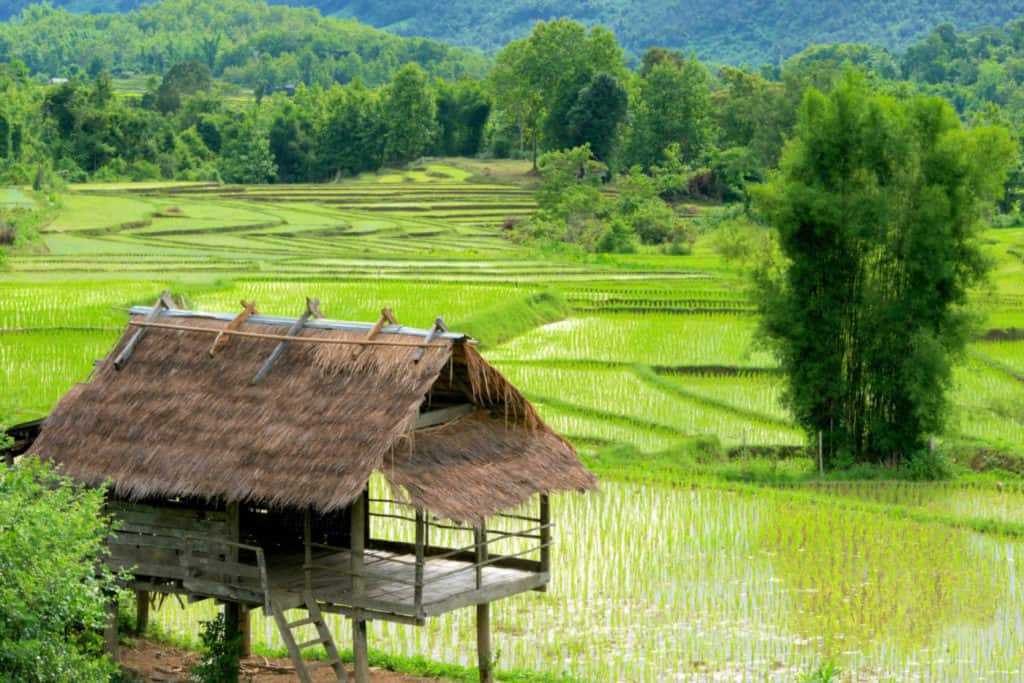
Discover How to Farm Rice
If there’s one certainty about your time in Luang Prabang, you’re going to eat a lot of rice. Sticky rice is everywhere and central part of local cuisine. Much of the rice you see in the city comes from the surrounding regions and with the helps of the Living Land Organic Farm, you can go behind the scenes.
The rice fields of Central and South East Asia are common photography hot spots. But here, you’ll put the camera away and learn the process of growing, nurturing and cultivating rice. It’s a hands on experience with the farm employing the use of no motorized machinery. This way, you’ll see how rice has been grown for hundreds of years.
The fun begins by picking out the best grains, the rest end up being fed to the chickens. Next up, you’ll plant the seeds before jumping forward in time to when the field is ready to plough. You can expect to get dirty also, with a big part of the process involving stumbling through muddy fields.
Discover Luang Prabang’s rice fields, Kuang Si Falls and the Buffalo Dairy farm on this guided tour.
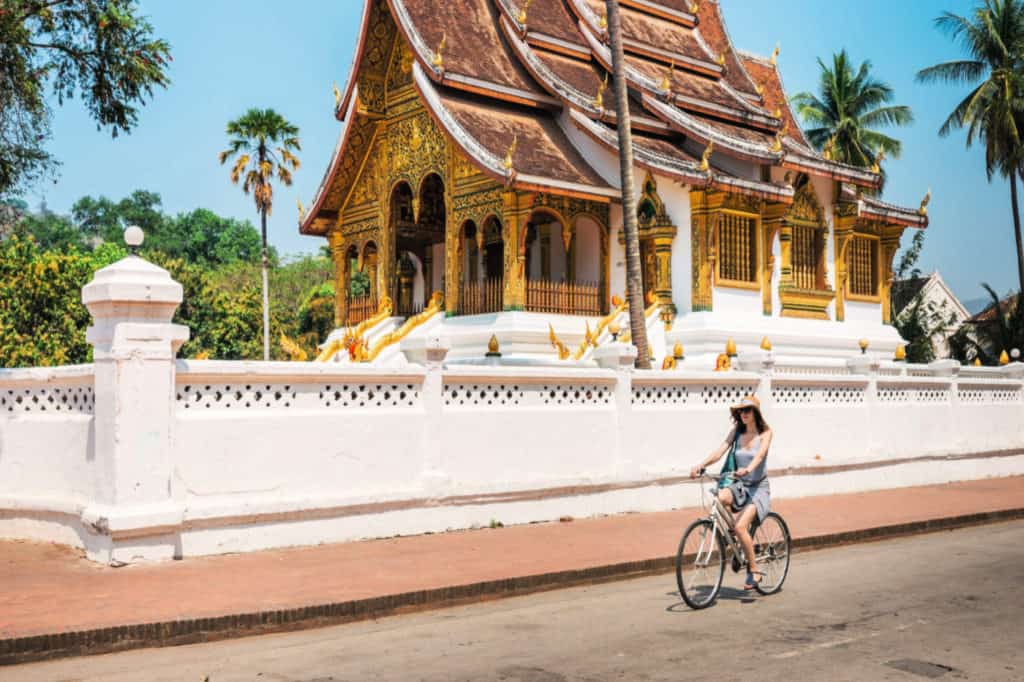
Enjoy a Bike Ride
Forget scooters and tuk tuks, the laid back city of Luang Prabang was meant to be explored at a slower pace. Cycling continues to grow in popularity around the town and is the perfect way to discover a new side of the city.
While Luang Prabang has a number of great tours, many overlap. But when exploring on two wheels, something that wouldn’t sound that amazing on paper appears around the corner, and not having expected it, you see its true brilliance. That’s what peeling back the layers on a bike can do.
As you get further and further from the city, the villages become more rural and simple. Traditional wooden homes appear through the trees, with vegetables laid out in front to dry. You’ll be met with the sounds of clucking chickens and not engines, with the laughs and greeting of kids floating on by.
If you’re up for the journey, you can even ride all the way to Kuang Si Falls, passing craggy peaks, rice fields and cozy towns along the way.
Go Bowling
Travelers that have partied all night long in Ho Chi Minh City, Bangkok and Koh Phi Phi may be surprised to learn about Laos midnight curfew. This country-wide rule is strictly enforced (Vang Vieng is a notable exception) allowing locals to get up early and take part in Tak Bat.
Residents of Luang Prabang take this seriously with a lot of businesses and bars closing even earlier at 11pm. This has led to the development of one of the more strange late night traditions, bowling. Whether you’re at a night market or walking around town, a tuk tuk may swing by offering to take you to the Luang Prabang Bowling Alley. At first it may seem like a joke, but come midnight, it’s the place to be. Never has bowling been this fun, well not since your 10th birthday party.
The cab ride will take you slightly out of town, where the chickens roam free. But soon you’ll see the bowling alley that looks straight out of your hometown. Inside, the beer and whiskey flow and the ten pins clatter among the revelry. In a city of traditions, it’s a strange one but no less memorable.
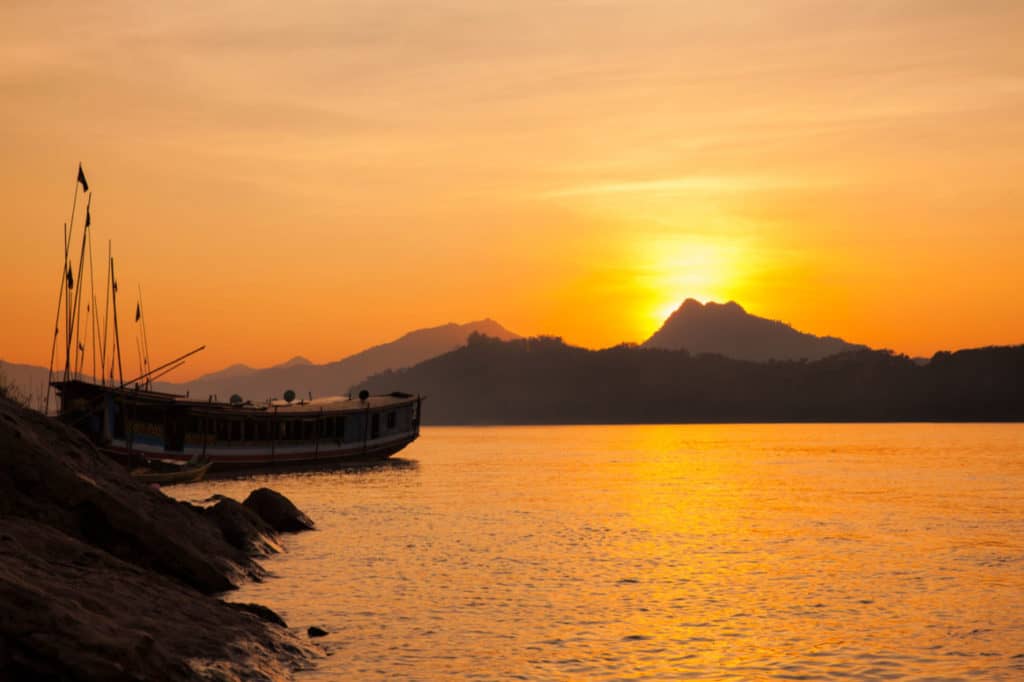
Take a Cruise on the Mekong
The Mekong River begins at the Lasagongma Spring in the Tibetan plateaus. Over its 2,703 mile (3449m) journey it meanders through China, Myanmar, Thailand, Laos, Cambodia and ending in Vietnam. The mighty river is the source of much fascination and inspires the adventurous spirit of all travelers.
The river cuts through Luang Prabang, providing a great opportunity to explore the experience the Mekong. There is no shortage of ways to do so, with boats leaving throughout the day on simple cruises, tours to Pak Ou Caves and even to neighboring towns and the Laos border. You’ll also have the option of chartering your own boat and deciding on the itinerary.
If you’re planning on heading to Northern Thailand after Luang Prabang, consider crossing the border at Huay Xai after a two-day cruise along the river.
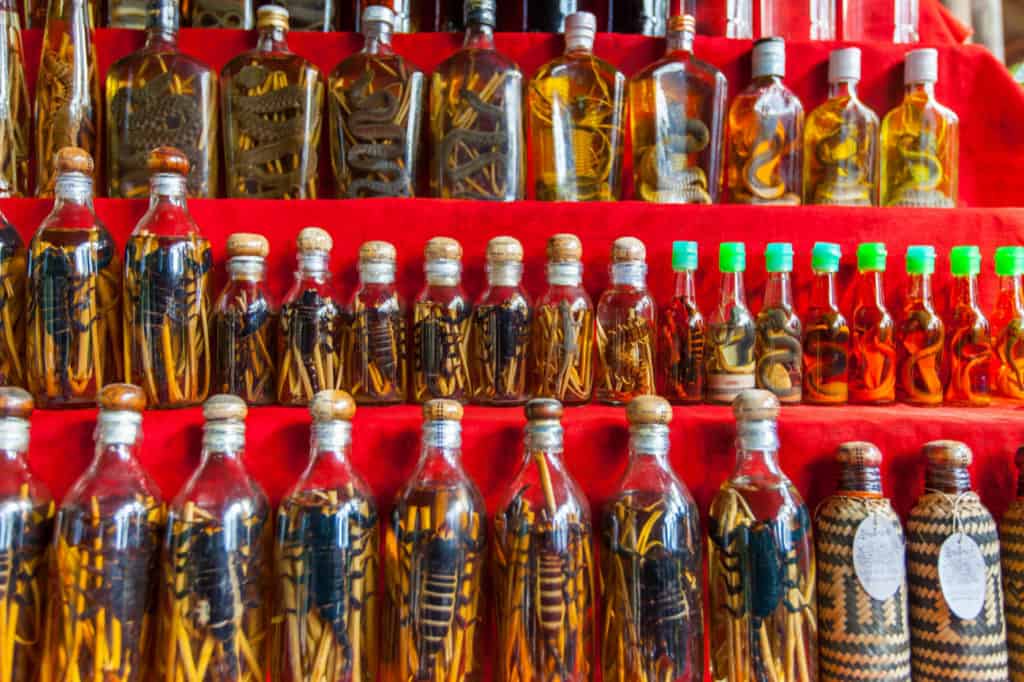
Visit the Whiskey Village
A common stop on tours of Pak Ou Caves is Luang Prabang’s Whiskey Village. The whiskey cultivated here is called Lao-Lao, which translates to alcohol-country. A lot of whiskeys around the world are made from a fermented mix of grains like rye, wheat and malt before being aged in wooden barrel. But in keeping with their culinary traditions, Whiskey Village uses rice.
Using an age-old process, they’re able to ferment the rice to create a drink that is common throughout town. You may even spot it at the city’s infamous bowling alley. Because the whiskey is such a part of local lifestyle, the locals won’t be shy about giving you samples to try.
The experience will probably be a short one. But while you’re there, you’ll see the process, including the preparation of the rice and alcohol. If you like what you see, you can purchase some before jumping back on the boat.
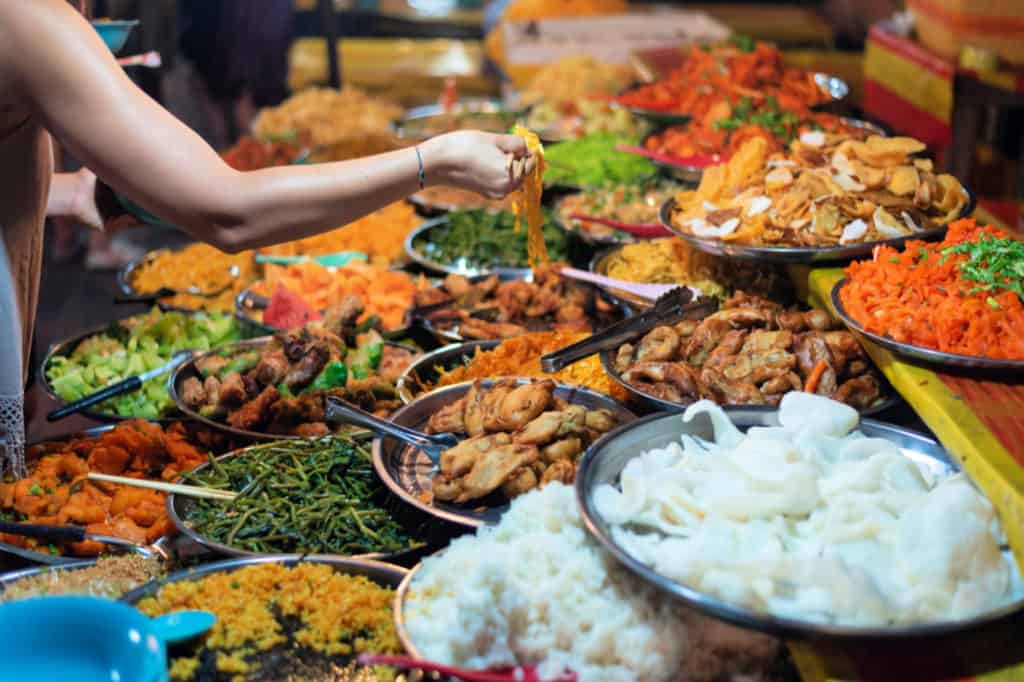
Have Dinner on Buffet Street
Having explored town on a food tour and visited the many markets, you’re ready for the next step. On the aptly named Buffet Street you can indulge in a hodgepodge of options that essentially encompass all of Laotian cuisine. Along a small alley that connects to Sisavangvong Road, rows of vendors are spread out, serving every you could think of.
The immense Night Food Market is presented buffet style, with each plate costing 20,000 kip (less than 2usd). You simply walk along the alleyway, plate in hand, picking whatever takes your fancy. You’ll find plenty of traditional dishes along with your simple noodle and rice meals. Vegans and vegetarians need not worry, as they are well represented.
At the end of the street, you’ll pay for the food, which is then heated up. You’ll then join the crowns on the many picnic tables to enjoy the feast. In true buffet style, you can continue to walk to and from until you’re ready to tap out.
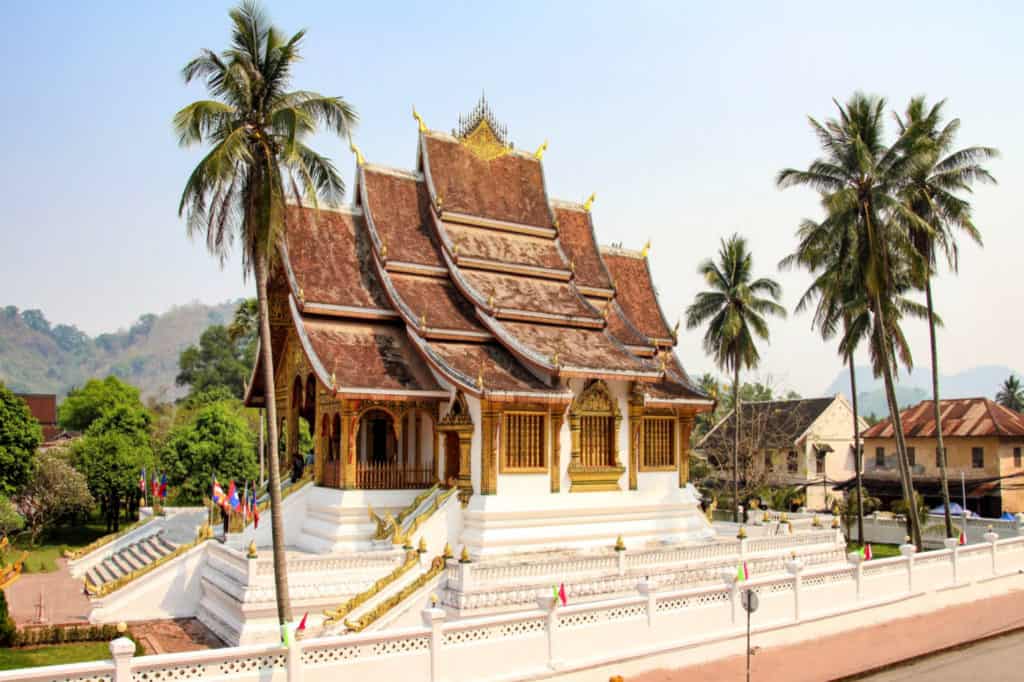
Go Temple Hopping
Luang Prabang’s position on the Mekong River makes it a beautiful city off the bat. But the city’s 33 wats give Luang Prabang a great sense of spirituality and history, making it even more enchanting. We’ve mentioned a few temples already, including Wat Xiengthong, but we’ve merely scratched the surface.
The numerous golden temples around town have a wonderful aura. From Wat Mai to Wat Siphoutthabath, the gilded structures offer the perfect place to relax, enjoy gorgeous architecture and learn about the city’s deep connection to Buddhism. Keep in mind that some temples require a fee to enter and be sure to dress appropriately.
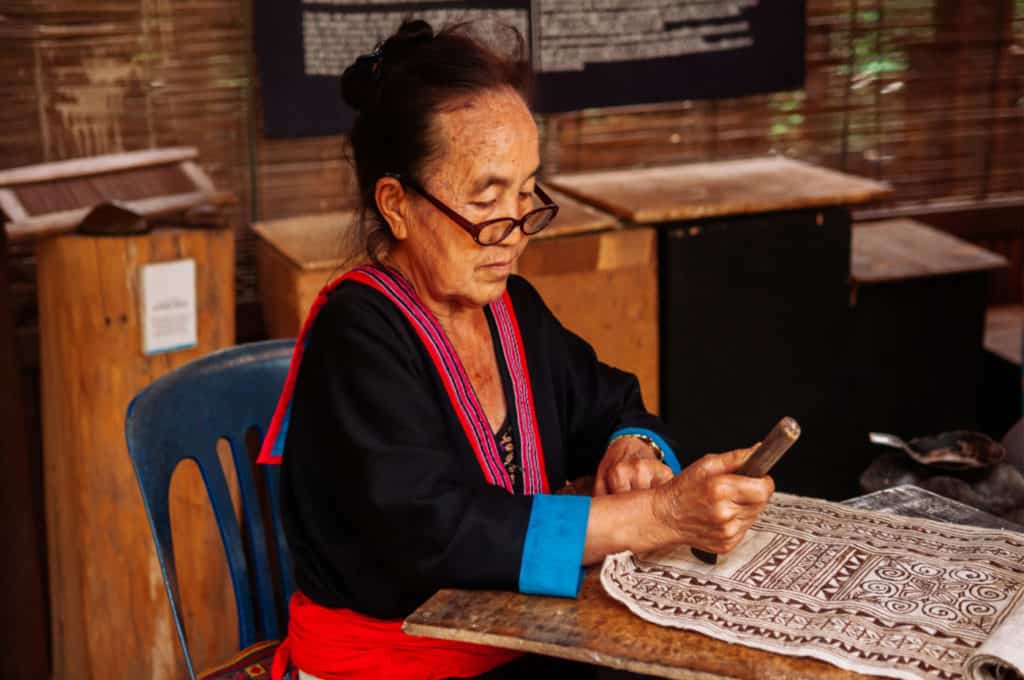
Spend Time at Ock Pop Tok
Otherwise known as the Living Craft Center, Ock Pop Tok is a wide-ranging museum with plenty to do. You can easily spend a few hours or a whole day here, depending on what you want to see and experience.
It’s a large complex that is the engine the drives the night markets by producing much of the handicrafts and silk scarves. Within the lush garden, you’ll come across groups working on traditional looms, with others decorating the cotton before drying each strand.
The Living Craft Center offers guided and interactive tours that let you try to take part in plant dyeing and weaving silk. Afterwards, explore the textile gallery that is full of eye-catching art. To complete the experience, head to center’s Silk Road Cafe, where you can enjoy lunch with a view over the Mekong.
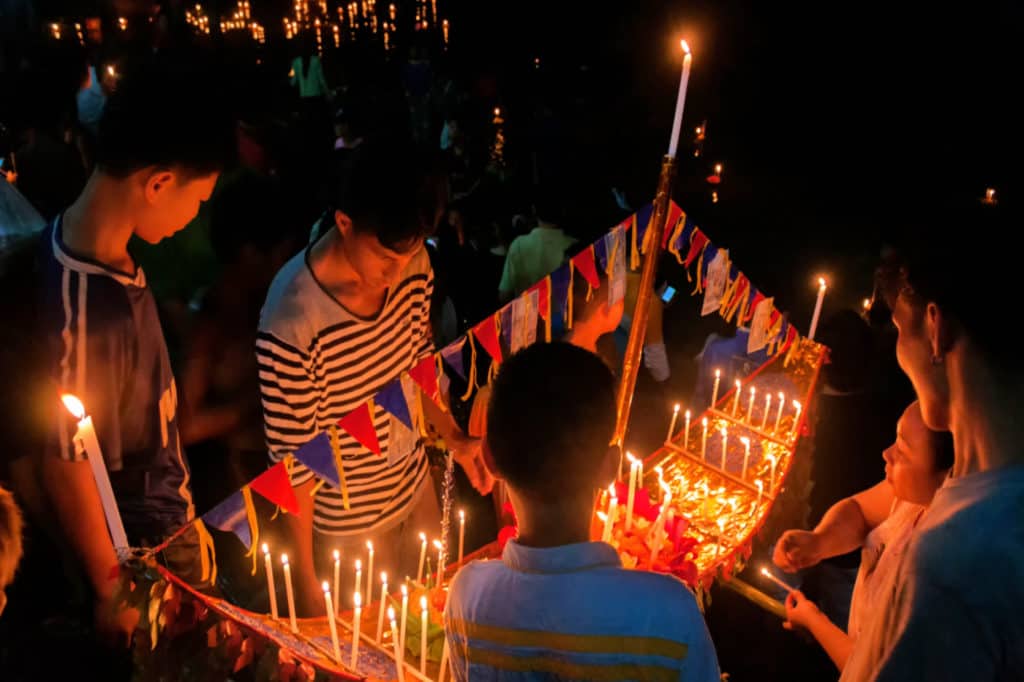
Experience the Festival of the Fire Boat
We’ve spoken a lot about the traditions of Luang Prabang, but if there’s one unique event that sums it up best, it’s the Festival of the Fire Boat. The spectacular event showcases the nation’s incredible diversity during an annual event that combines Buddhist traditions and also local customs that out-date the religion.
The festival occurs at the end of Vassa (Buddhist Lent), which is generally in October. In the days leading up, you’ll see the city lathered with star lanterns made from paper and bamboo. Temples are brightly decorated, along with shops and hotels, with each ornament glowing.
The festival begins with an Alms Giving Ceremony and during the evening, candles are lit in huge numbers and placed in front of homes and temples. The community then gathers on the Mekong River and place a small krathong (raft) that is covered in candles on the water.
But the festival isn’t over yet. It reaches a crescendo in the Old Town. Here, the Naga Fire Boat parade begins, which involves two dragons lit up in bright orange and carried through town.





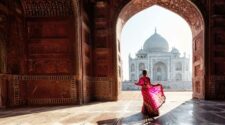
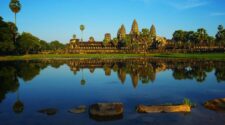
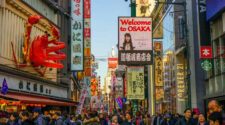
Gorgeous. I love the second shot!
Thanks so much! :) That’s one of my favourites!
Wow Lauren these are actually gorgeous!! It must have been incredible! xx
Thanks lovely :) It would have been more incredible without being surrounded by tons of people, but it was still pretty amazing :D
Lauren, I love these photos. The second photo and the second to last photo are my favourites. That is all.
OK, not quite. I wish we had offensive place names in the UK, too. The best I can think of are Bitchfield and Cockermouth.
Wait, do they really exist?! Why have I never heard of them? OR BEEN TO THEM?!
Beautiful! The second to last is unreal…
Thanks so much, Callie :)
Lauren,
you definitely should join “Capture the colour” contest.
http://www.shorttraveltips.com/capture-the-colour/
I think you have enough pictures to enter it.
Thanks, Vi. I’ll check it out :)
How did you manage to not have French and Chinese silhouettes in all you pictures? When I was up there, the place was packed with enormous tour groups from both of those countries and a whole lot more people from everywhere else.
Haha! It wasn’t too bad when I was there – perhaps because it was just getting into the rainy season? I just used a lot of cropping and dodgy angles to get the people out of the shot!
Gorgeous! Gorgeous! Gorgeous! The second shot is my favorite. :-)
Those are some pretty fabulous views!
Gorgeous photos I have to agree the second one is stunning! Can’t wait to get on the road again. You give me extreme wanderlust!
Lauren, the colors are gorgeous!
My favorites- the 2nd and 3rd from the bottom.
Thanks for the tip! Hopefully, will go to “Pussy Hill” soon ;)
I love sunsets and these are gorgeous!
This is exactly what I needed! Excited to see the sunset tonight. Hope you’re still traveling.
I am! Four and a half years and counting :-) Hope you enjoy the sunset!